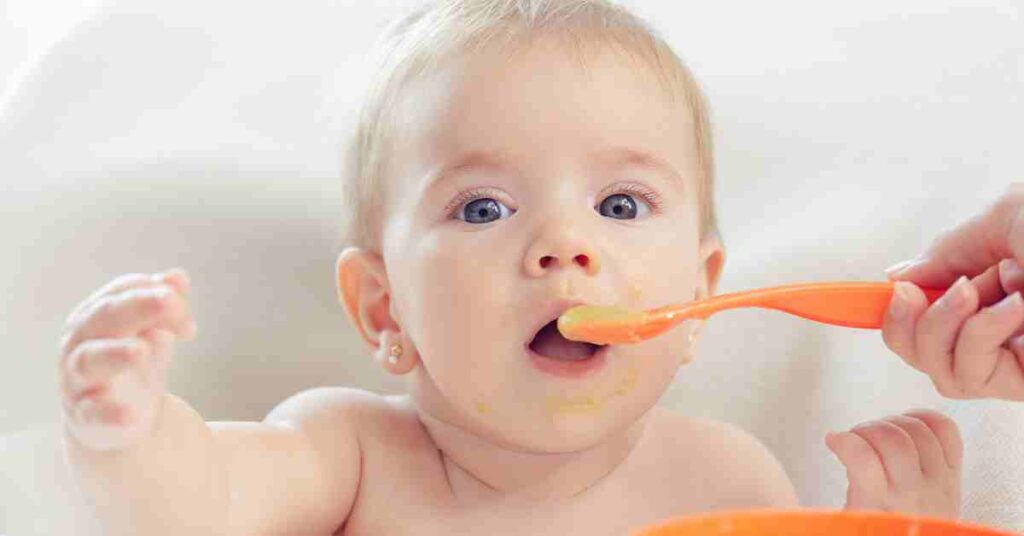Understanding Anaphylaxis in a Baby: Signs, Causes, and What to Do

Anaphylaxis in a baby is a serious allergic reaction that requires immediate attention. Knowing how to identify the signs and what steps to take can make all the difference in an emergency.
In this blog, we’ll cover everything you need to know about anaphylaxis in a baby, including what causes it, how to recognise it, and how to respond.
What is Anaphylaxis in a Baby?
Anaphylaxis in a baby is a severe and rapid allergic reaction that can affect multiple parts of the body. This condition can be life-threatening and typically happens within minutes of exposure to an allergen. Common allergens include certain foods, insect stings, and some medications.
Common Triggers of Anaphylaxis in a Baby

There are several triggers that can cause anaphylaxis in a baby. The most common include:
- Food Allergens: Foods like cow’s milk, eggs, peanuts, tree nuts, soy, and wheat are frequent triggers.
- Insect Stings: Stings from bees or wasps can cause severe reactions in babies who are allergic.
- Medications: Though rare, some medications, including antibiotics, can trigger anaphylaxis in a baby.
- Environmental Allergens: In some cases, allergens like pet dander or dust mites might lead to a severe reaction.
Signs of Anaphylaxis in a Baby

Recognising the signs of anaphylaxis in a baby is crucial for quick action. Symptoms can include:
- Trouble breathing or wheezing
- Swelling of the face, lips, or tongue
- Hives or a rash, often itchy
- Vomiting or diarrhoea
- Pale or blue skin
- Weak or rapid pulse
- Fainting or loss of consciousness
What to Do if Your Baby Has Anaphylaxis

If you suspect your baby is experiencing anaphylaxis, follow these steps immediately:
- Use an Epinephrine Auto-Injector: If your baby has been prescribed an epinephrine auto-injector, administer it right away according to the instructions provided by your healthcare professional.
- Call Emergency Services: Dial triple zero (000) to get immediate medical help. Even if your baby seems to recover after the injection, professional medical care is important as anaphylaxis can worsen or return.
- Position Your Baby Safely: Lay your baby flat and elevate their legs if possible. If they are vomiting or struggling to breathe, place them on their side to prevent choking.
- Monitor Breathing and Pulse: Keep a close eye on your baby’s breathing and pulse while waiting for emergency help. If they stop breathing, begin CPR if you’re trained to do so.
Preventing Anaphylaxis in a Baby

Preventing anaphylaxis in a baby involves avoiding known allergens and being prepared in case of exposure. Here are some tips:
- Introduce Allergens Slowly: When introducing new foods like peanuts or eggs, do so one at a time and watch for any signs of an allergic reaction. Consult your GP if you’re concerned about your baby’s risk of allergies.
- Have an Action Plan: Work with your healthcare provider to create an emergency action plan that includes the use of epinephrine and other important steps.
- Educate Caregivers: Make sure anyone who looks after your baby knows about their allergies and understands what to do in an emergency.
Want more? We’ve got you covered…
Our Baby First Aid Courses
Our baby first aid courses are available in person in your home and online. We run classes in your home with groups of 2, 4 or up to 10 in Sydney & Melbourne and you can book in 3 easy steps!
- Pick your class
- Follow the prompts to purchase
- We will contact you within 24 hours to lock in your date of choice
Our First Aid Certificate Courses
We run most of the popular first aid courses Australia wide. HLTAID011 Provide First Aid, HLTAID009 Provide CPR, HLTAID012 Provide First Aid in an Education & Care Setting, RAMOAP (anaphylaxis), Mental Health first aid and CPR/LVR to name a few.
Book your public spot online or contact us if you have a group of 5+ people for onsite training.
Here are some other resources you may enjoy!
FREE GUIDE: Your Virtual Baby First Aid Kit
FREE GUIDE: Introducing Common Allergy Foods & Allergic Reactions
FREE Workplace Emergency Preparedness Plan: Grab this at the bottom of every page!
Follow for baby & child first aid and allergy info and tips on Instagram & TikTok, all @thenestcpr

